SP481E/SP485E
Enhanced Low Power Half-Duplex
RS-485 Transceivers
FEATURES
■ +5V Only
■ Low Power BiCMOS
■ Driver/Receiver Enable for Multi-Drop
configurations
■ Low Power Shutdown Mode
(SP481E)
■ Enhanced ESD Specifications:
+15KV Human Body Model
+15KV IEC1000-4-2 Air Discharge
+8KV IEC1000-4-2 Contact Discharge
■ Available in RoHS Compliant, Lead Free
Packaging: NSOIC and PDIP
RO 1
RE 2
DE 3
DI 4
R
8 VCC
7 B
6 A
D
SP485
5 GND
Top View
SP481E and SP485E
Pinout (Top View)
DESCRIPTION
The SP481E and the SP485E are a family of half-duplex transceivers that meet the
specifications of RS-485 and RS-422 serial protocols with enhanced ESD performance. The
ESD tolerance has been improved on these devices to over +15KV for both Human Body
Model and IEC1000-4-2 Air Discharge Method. These devices are pin-to-pin compatible with
Sipex's SP481 and SP485 devices as well as popular industry standards. As with the original
versions, the SP481E and the SP485E feature Sipex's BiCMOS design allowing low power
operation without sacrificing performance. The SP481E and SP485E meet the requirements
of the RS-485 and RS-422 protocols up to 10Mbps under load. The SP481E is equipped with
a low power Shutdown mode.
RO 1
RE 2
DE 3
DI 4
R
D
8 Vcc
7 B
6 A
5 GND
SP481E and SP485E
May11-2007
SP481E Low Power Half-Duplex RS485 Transceivers
© 2007 Sipex Corporation
1
�
ABSOLUTE MAXIMUM RATINGS
These are stress ratings only and functional operation of the device at
these ratings or any other above those indicated in the operation sections
of the specifications below is not implied. Exposure to absolute maximum
rating conditions for extended periods of time may affect reliability.
VCC..........................................................................................................+7V
Input Voltages
Logic........................................................-0.3V to (VCC+0.5V)
Drivers..................................................-0.3V to (VCC+0.5V)
Receivers................................................................. ±15V
TMIN to TMAX and VCC = 5V ± 5% unless otherwise noted.
Output Voltages
Logic........................................................-0.3V to (VCC+0.5V)
Drivers...................................................................... ±15V
Receivers............................................-0.3V to (VCC+0.5V)
Storage Temperature.......................................................-65˚C to +150˚C
Power Dissipation per Package
8-pin NSOIC (derate 6.60mW/oC above +70oC)...........................550mW
8-pin PDIP (derate 11.8mW/oC above +70oC)............................1000mW
ELECTRICAL CHARACTERISTICS
MIN.
TYP.
MAX. UNITS CONDITIONS
VCC
VCC
VCC
Volts
Volts
Volts
Unloaded; R = ∞ ; see Figure 1
with load; R = 50Ω; (RS-422);
see Figure 1
with load; R = 27Ω; (RS-485);see Figure 1
0.2
Volts
R = 27Ω or R = 50Ω; see Figure 1
3
0.8
±10
Volts
Volts
Volts
µA
R = 27Ω or R = 50Ω; see Figure 1
Applies to DE, DI, RE
Applies to DE, DI, RE
Applies to DE, DI, RE
±250 mA
±250 mA
-7V ≤ VO ≤ +12V
-7V ≤ VO ≤ +12V
Mbps
ns
ns
ns
ns
ns
ns
ns
ns
ns
ns
60
80
60
80
10
40
70
70
70
70
RE = 5V, DE = 5V; RDIFF = 54Ω,
CL1 = CL2 = 100pF
tPLH; RDIFF = 54Ω, CL1 = CL2 = 100pF;
see Figures 3 and 5
tPLH; RDIFF = 54Ω, CLI = CL2 = 100pF;
See Figures 3 and 5
tPHL; RDIFF = 54Ω, CL1 = CL2 = 100pF;
see Figures 3 and 5
tPHL; RDIFF = 54Ω, CL1 = CL2 = 100pF;
see Figures 3 and 5
see Figures 3 and 5,
tSKEW = | tDPLH - tDPHL |
From 10% to 90%; RDIFF = 54Ω,
CL1 = CL2 = 100pF; see Figures 3 & 6
CL = 100pF; see Figures 4 & 6; S2
CL = 100pF; see Figures 4 & 6; S1
CL = 100pF; see Figures 4 & 6; S1
CL = 100pF; see Figures 4 & 6; S2
30
30
30
30
5
15
40
40
40
40
PARAMETERS
SP481E/SP485E DRIVER
DC Characteristics
Differential Output Voltage
Differential Output Voltage
Differential Output Voltage
Change in Magnitude of Driver
Differential Output Voltage for
Complimentary States
Driver Common-Mode
Output Voltage
Input High Voltage
Input Low Voltage
Input Current
Driver Short-Circuit Current
VOUT = HIGH
VOUT = LOW
SP481E/SP485E DRIVER
AC Characteristics
Maximum Data Rate
Driver Input to Output
Driver Input to Output
(SP485EMN ONLY)
Driver Input to Output
Driver Input to Output
(SP485EMN ONLY)
Driver Skew
GND
2
1.5
2.0
10
20
20
20
20
Driver Rise or Fall Time
3
Driver Enable to Output High
closed
Driver Enable to Output Low
closed
Driver Disable Time from Low
closed
Driver Disable Time from High
closed
May11-2007
SP481E Low Power Half-Duplex RS485 Transceivers
© 2007 Sipex Corporation
2
�
TMIN to TMAX and VCC = 5V ± 5% unless otherwise noted.
MIN.
ELECTRICAL CHARACTERISTICS
TYP.
MAX. UNITS CONDITIONS
-0.2
-0.4
3.5
+0.2 Volts
+0.4 Volts
-7V ≤ VCM ≤ +12V
-7V ≤ VCM ≤ +12V
20
mV
Volts
Volts
VCM = 0V
IO = -4mA, VID = +200mV
IO = +4mA, VID = -200mV
0.4
12
15
±1
µA
kΩ
+1.0 mA
-0.8 mA
95 mA
0.4V ≤ VO ≤ 2.4V; RE = 5V
-7V ≤ VCM ≤ +12V
DE = 0V, VCC = 0V or 5.25V, VIN = 12V
DE = 0V, VCC = 0V or 5.25V, VIN = -7V
0V ≤ VO ≤ VCC
45
45
13
45
45
45
45
Mbps
ns
100
100
ns
ns
ns
ns
ns
ns
70
70
70
70
= 100pF; Figures 3 & 7
RE = 0V, DE = 0V
tPLH; RDIFF = 54Ω,
CL1 = CL2
tPHL; RDIFF = 54Ω,
= 100pF; Figures 3 & 7
CL1 = CL2
RDIFF = 54Ω; CL1 = CL2 = 100pF;
Figures 3 & 7
CRL = 15pF; Figures 2 & 8; S1 closed
CRL = 15pF; Figures 2 & 8; S2 closed
CRL = 15pF; Figures 2 & 8; S1 closed
CRL = 15pF; Figures 2 & 8; S2 closed
50
200
600
ns
RE = 5V, DE = 0V
40
40
300
300
100
ns
100
ns
1000 ns
1000 ns
CL = 100pF; See Figures 4 & 6; S2 closed
CL = 100pF; See Figures 4 & 6; S1 closed
CL = 15pF; See Figures 2 & 8; S2 closed
CL = 15pF; See Figures 2 & 8; S1 closed
+4.75
+5.25 Volts
7
10
20
20
PARAMETERS
SP481E/SP485E RECEIVER
DC Characteristics
Differential Input Threshold
Differential Input Threshold
(SP485EMN ONLY)
Input Hysteresis
Output Voltage High
Output Voltage Low
Three-State (High Impedance)
Output Current
Input Resistance
Input Current (A, B); VIN = 12V
Input Current (A, B); VIN = -7V
Short-Circuit Current
SP481E/SP485E RECEIVER
AC Characteristics
Maximum Data Rate
Receiver Input to Output
Receiver Input to Output
Diff. Receiver Skew ItPLH-tPHLI
Receiver Enable to
Output Low
Receiver Enable to
Output High
Receiver Disable from Low
Receiver Disable from High
SP481E
Shutdown Timing
Time to Shutdown
Driver Enable from Shutdown
to Output High
Driver Enable from Shutdown
to Output Low
Receiver Enable from
Shutdown to Output High
Receiver Enable from
Shutdown to Output Low
POWER REQUIREMENTS
Supply Voltage
Supply Current
SP481E/485E
No Load
SP481E
Shutdown Mode
ENVIRONMENTAL AND MECHANICAL
Operating Temperature
Commercial (_C_)
Industrial (_E_)
(_M_)
Storage Temperature
Package
Plastic DIP (_P)
NSOIC (_N)
0
-40
-40
-65
RE, DI = 0V or VCC; DE = VCC
RE = 0V, DI = 0V or 5V; DE = 0V
DE = 0V, RE=VCC
900
600
µA
µA
µA
10
+70
+85
+125
+150
°C
°C
°C
°C
May11-2007
SP481E Low Power Half-Duplex RS485 Transceivers
© 2007 Sipex Corporation
3
�
RO 1
RE 2
DE 3
DI 4
R
8 VCC
7 B
6 A
D
SP485
5 GND
Top View
SP481E and SP485E
Pinout (Top View)
PIN FUNCTION
Pin 1 – RO – Receiver Output.
Pin 2 – RE – Receiver Output Enable Active LOW.
Pin 3 – DE – Driver Output Enable Active HIGH.
Pin 4 – DI – Driver Input.
Pin 5 – GND – Ground Connection.
Pin 6 – A – Driver Output/Receiver Input
Non-inverting.
Pin 7 – B – Driver Output/Receiver Input Inverting.
Pin 8 – Vcc – Positive Supply 4.75V
INPUTS
OUTPUTS
INPUTS
OUTPUTS
RE DE DI CONDITION B
0
X
X
1
Z
X
X
Z
No Fault
No Fault
1
0
X
X
1
1
0
1
LINE
X
Fault
A
1
0
Z
Z
RE
0
0
0
1
DE
0
0
0
0
A - B
+0.2V
-0.2V
Inputs Open
X
R
1
0
1
Z
Table 2. Receive Function Truth Table
Table 1. Transmit Function Truth Table
DE
A, B
A, B
+3V
0V
5V
VOL
VOH
0V
f = 1MHz; tR < 10ns; tF < 10ns
1.5V
tZL
2.3V
2.3V
tZH
Output normally LOW
Output normally HIGH
1.5V
tLZ
0.5V
0.5V
tHZ
Figure 6. Driver Enable and Disable Times
A – B
V0D2+
V0D2–
R
VOH
VOL
0V
INPUT
0V
tPHL
1.5V
OUTPUT
tPLH
f = 1MHz; tR < 10ns; tF < 10ns
1.5V
tSKEW = | tPHL - tPLH |
Figure 7. Receiver Propagation Delays
RE
+3V
0V
R
R
5V
VIL
VIH
0V
1.5V
f = 1MHz; tR < 10ns; tF < 10ns
tZL
1.5V
Output normally LOW
Output normally HIGH
1.5V
tZH
1.5V
tLZ
0.5V
0.5V
tHZ
Figure 8. Receiver Enable and Disable Times
May11-2007
SP481E Low Power Half-Duplex RS485 Transceivers
© 2007 Sipex Corporation
5
�
DESCRIPTION
Receivers
The SP481E and SP485E are half-duplex differ-
ential transceivers that meet the requirements of
RS-485 and RS-422. Fabricated with a Sipex
proprietary BiCMOS process, all three products
require a fraction of the power of older bipolar
designs.
The RS-485 standard is ideal for multi-drop
applications and for long-distance interfaces.
RS-485 allows up to 32 drivers and 32 receivers
to be connected to a data bus, making it an ideal
choice for multi-drop applications. Since the
cabling can be as long as 4,000 feet, RS-485
transceivers are equipped with a wide (-7V to
+12V) common mode range to accommodate
ground potential differences. Because RS-485 is
a differential interface, data is virtually immune
to noise in the transmission line.
Drivers
The driver outputs of the SP481E and SP485E
are differential outputs meeting the RS-485 and
RS-422 standards. The typical voltage output
swing with no load will be 0 Volts to +5 Volts.
With worst case loading of 54Ω across the differ-
ential outputs, the drivers can maintain greater
than 1.5V voltage levels. The drivers of the
SP481E, and SP485E have an enable control
line which is active HIGH. A logic HIGH on DE
(pin 3) will enable the differential driver outputs.
A logic LOW on DE (pin 3) will tri-state the
driver outputs.
The transmitters of the SP481E and SP485E
will operate up to at least 10Mbps.
The SP481E and SP485E receivers have differ-
ential inputs with an input sensitivity as low as
±200mV. Input impedance of the receivers is
typically 15kΩ (12kΩ minimum). A wide com-
mon mode range of -7V to +12V allows for large
ground potential differences between systems.
The receivers of the SP481E and SP485E have
a tri-state enable control pin. A logic LOW on
RE (pin 2) will enable the receiver, a logic HIGH
on RE (pin 2) will disable the receiver.
The receiver for the SP481E and SP485E will
operate up to at least 10Mbps. The receiver for
each of the two devices is equipped with the
fail-safe feature. Fail-safe guarantees that the
receiver output will be in a HIGH state when
the input is left unconnected.
Shutdown Mode
SP481E
The SP481E is equipped with a Shutdown mode.
To enable the Shutdown state, both the driver
and receiver must be disabled simultaneously.
A logic LOW on DE (pin 3) and a logic HIGH on
RE (pin 2) will put the SP481E into Shutdown
mode. In Shutdown, supply current will drop to
typically 1µA.
ESD TOLERANCE
The SP481E Family incorporates ruggedized
ESD cells on all driver output and receiver input
pins. The ESD structure is improved over our
previous family for more rugged applications
and environments sensitive to electro-static dis-
charges and associated transients. The improved
ESD tolerance is at least ±15kV without damage
nor latch-up.
There are different methods of ESD testing
applied:
a) MIL-STD-883, Method 3015.7
b) IEC1000-4-2 Air-Discharge
c) IEC1000-4-2 Direct Contact
May11-2007
SP481E Low Power Half-Duplex RS485 Transceivers
© 2007 Sipex Corporation
6
�
The Human Body Model has been the generally
accepted ESD testing method for semiconductors.
This method is also specified in MIL-STD-883,
Method 3015.7 for ESD testing. The premise of
this ESD test is to simulate the human body’s
potential to store electro-static energy and
discharge it to an integrated circuit. The
simulation is performed by using a test model as
shown in Figure 7. This method will test the
IC’s capability to withstand an ESD transient
during normal handling such as in manufacturing
areas where the ICs tend to be handled frequently.
The IEC-1000-4-2, formerly IEC801-2, is
generally used for testing ESD on equipment and
systems. For system manufacturers, they must
guarantee a certain amount of ESD protection
since the system itself is exposed to the outside
environment and human presence. The premise
with IEC1000-4-2 is that the system is required
to withstand an amount of static electricity when
ESD is applied to points and surfaces of the
equipment that are accessible to personnel during
normal usage. The transceiver IC receives most
of the ESD current when the ESD source is
applied to the connector pins. The test circuit for
IEC1000-4-2 is shown on Figure 8. There are
two methods within IEC1000-4-2, the Air
Discharge method and the Contact Discharge
method.
RC
RRCC
RS
RRSS
SW1
SW1SW1
SW2
SW2SW2
DC Power
Source
CS
CCSS
Device
Under
Test
Figure 7. ESD Test Circuit for Human Body Model
RC
RRCC
Contact-Discharge Module
Contact-Discharge Module
Contact-Discharge Module
RS
RRSS
RV
RRVV
SW1
SW1SW1
SW2
SW2SW2
DC Power
Source
CS
CCSS
Device
Under
Test
RS and RV add up to 330Ω for IEC1000-4-2.
RRS S and
add up to 330ΩΩ ffor IEC1000-4-2.
or IEC1000-4-2.
and RRV V add up to 330
Figure 8. ESD Test Circuit for IEC1000-4-2
May11-2007
SP481E Low Power Half-Duplex RS485 Transceivers
© 2007 Sipex Corporation
7
�
With the Air Discharge Method, an ESD voltage
is applied to the equipment under test (EUT)
through air. This simulates an electrically charged
person ready to connect a cable onto the rear of
the system only to find an unpleasant zap just
before the person touches the back panel. The
high energy potential on the person discharges
through an arcing path to the rear panel of the
system before he or she even touches the system.
This energy, whether discharged directly or
through air, is predominantly a function of the
discharge current rather than the discharge
voltage. Variables with an air discharge such as
approach speed of the object carrying the ESD
potential to the system and humidity will tend to
change the discharge current. For example, the
rise time of the discharge current varies with the
approach speed.
The Contact Discharge Method applies the ESD
current directly to the EUT. This method was
devised to reduce the unpredictability of the
ESD arc. The discharge current rise time is
constant since the energy is directly transferred
without the air-gap arc. In situations such as
hand held systems, the ESD charge can be directly
discharged to the equipment from a person already
holding the equipment. The current is transferred
on to the keypad or the serial port of the equipment
directly and then travels through the PCB and finally
to the IC.
The circuit model in Figures 7 and 8 represent
the typical ESD testing circuit used for all three
methods. The CS is initially charged with the DC
power supply when the first switch (SW1) is on.
Now that the capacitor is charged, the second
switch (SW2) is on while SW1 switches off. The
➙
i
30A
15A
0A
t=0ns
t ➙
t=30ns
Figure 9. ESD Test Waveform for IEC1000-4-2
voltage stored in the capacitor is then applied
through RS, the current limiting resistor, onto the
device under test (DUT). In ESD tests, the SW2
switch is pulsed so that the device under test
receives a duration of voltage.
For the Human Body Model, the current limiting
resistor (RS) and the source capacitor (CS) are
1.5kΩ an 100pF, respectively. For IEC-1000-4-
2, the current limiting resistor (RS) and the source
capacitor (CS) are 330Ω an 150pF, respectively.
The higher CS value and lower RS value in the
IEC1000-4-2 model are more stringent than the
Human Body Model. The larger storage capacitor
injects a higher voltage to the test point when
SW2 is switched on. The lower current limiting
resistor increases the current charge onto the test
point.
SP481E, SP485E
FAMILY
HUMAN BODY
MODEL Air Discharge Direct Contact Level
IEC1000-4-2
Driver Outputs
Receiver Inputs
±15kV
±15kV
±15kV
±8kV
±15kV ±8kV
4
4
May11-2007
SP481E Low Power Half-Duplex RS485 Transceivers
© 2007 Sipex Corporation
8
�
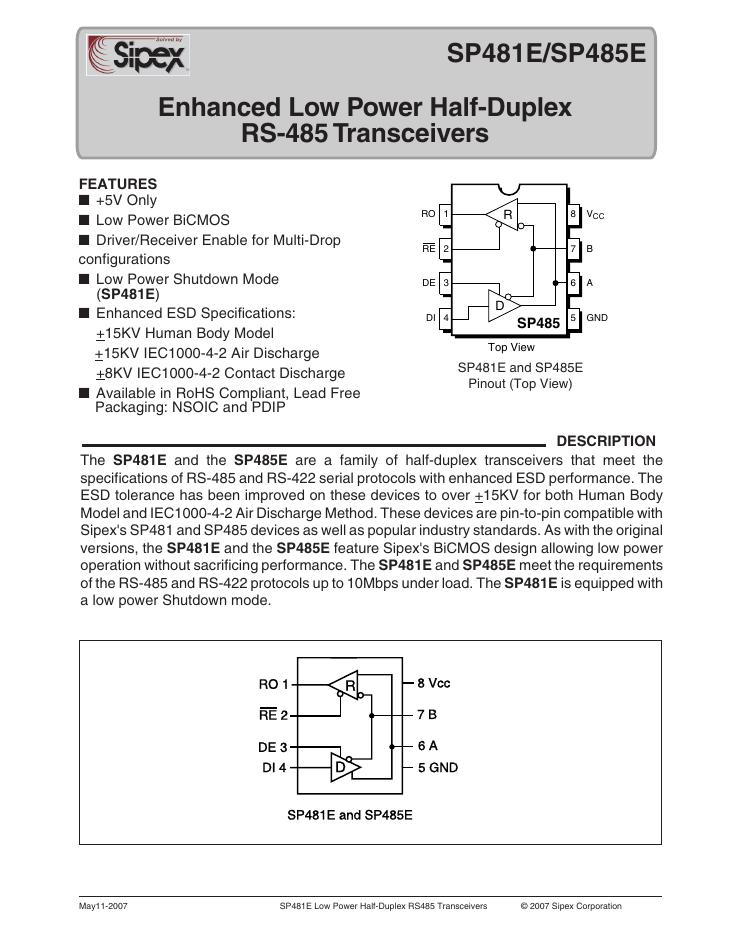
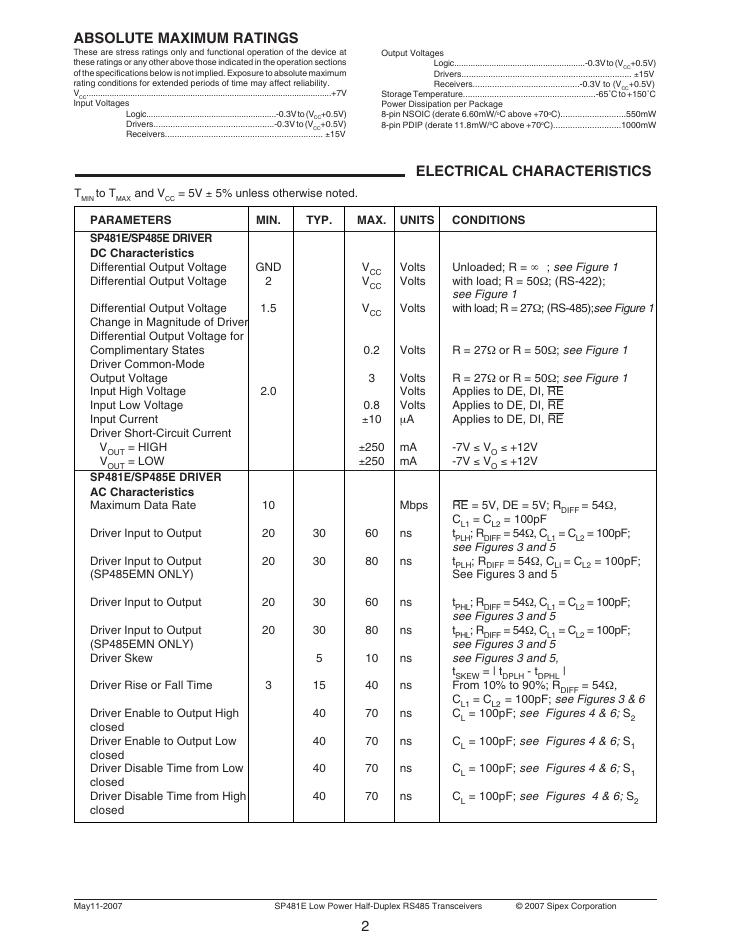
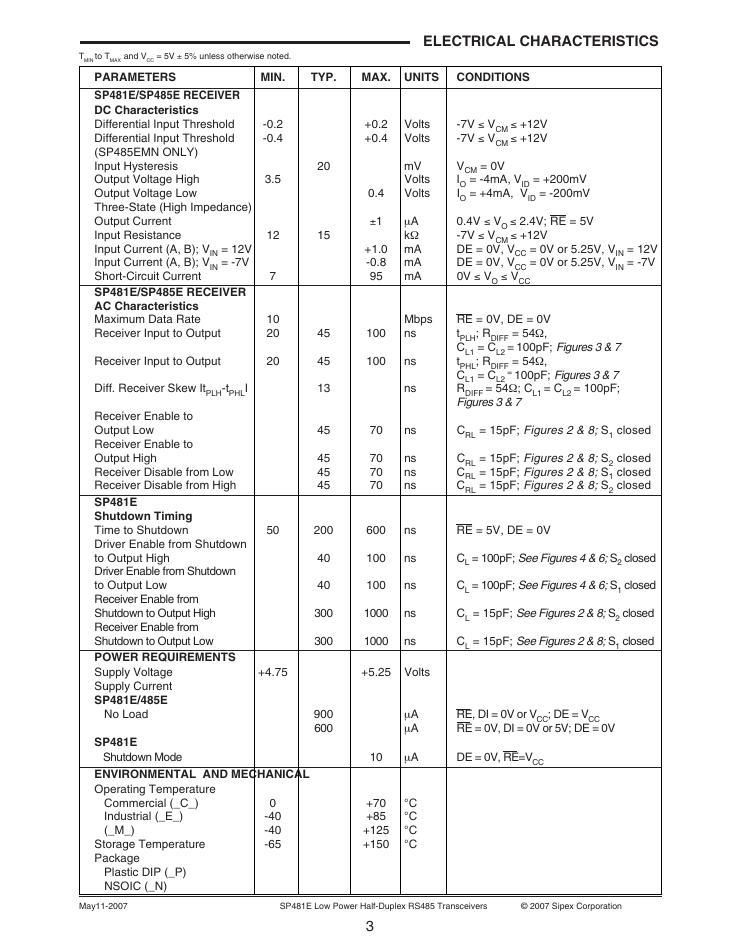
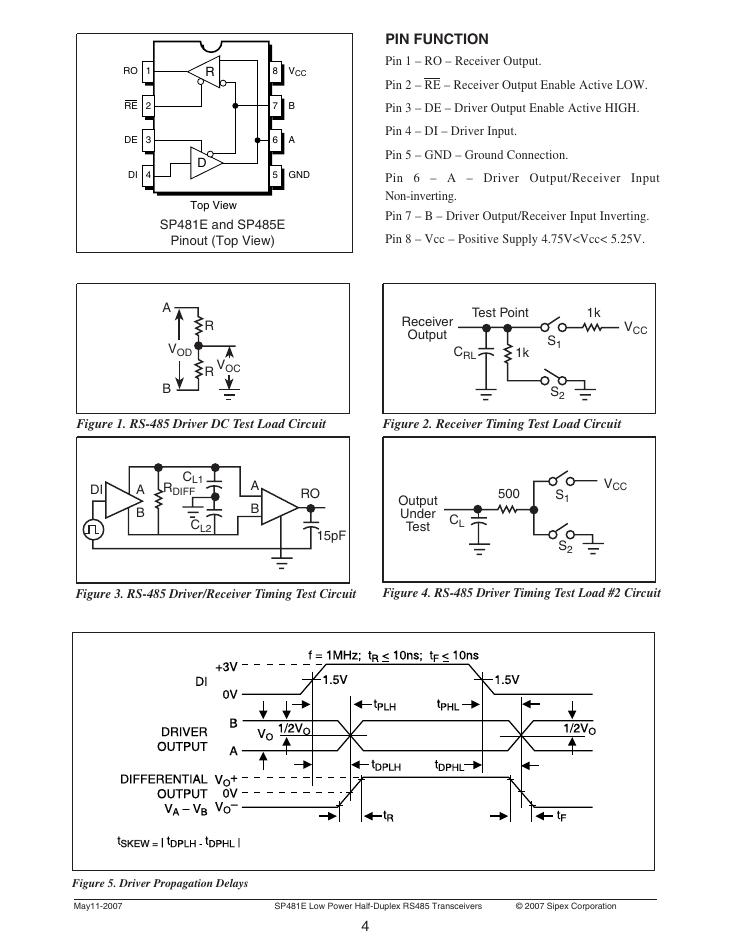


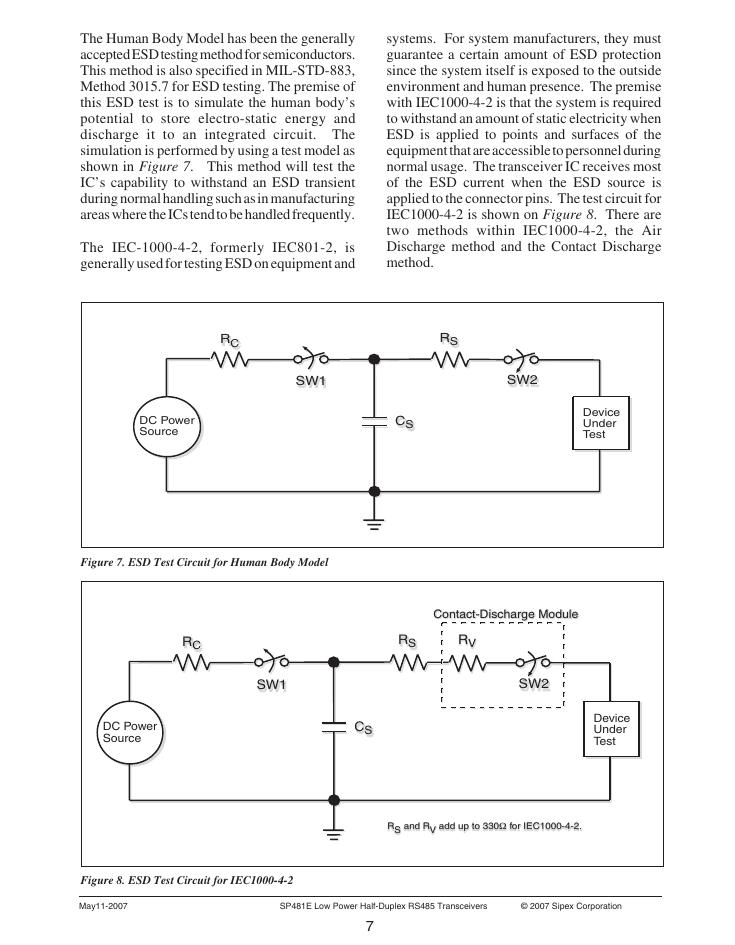
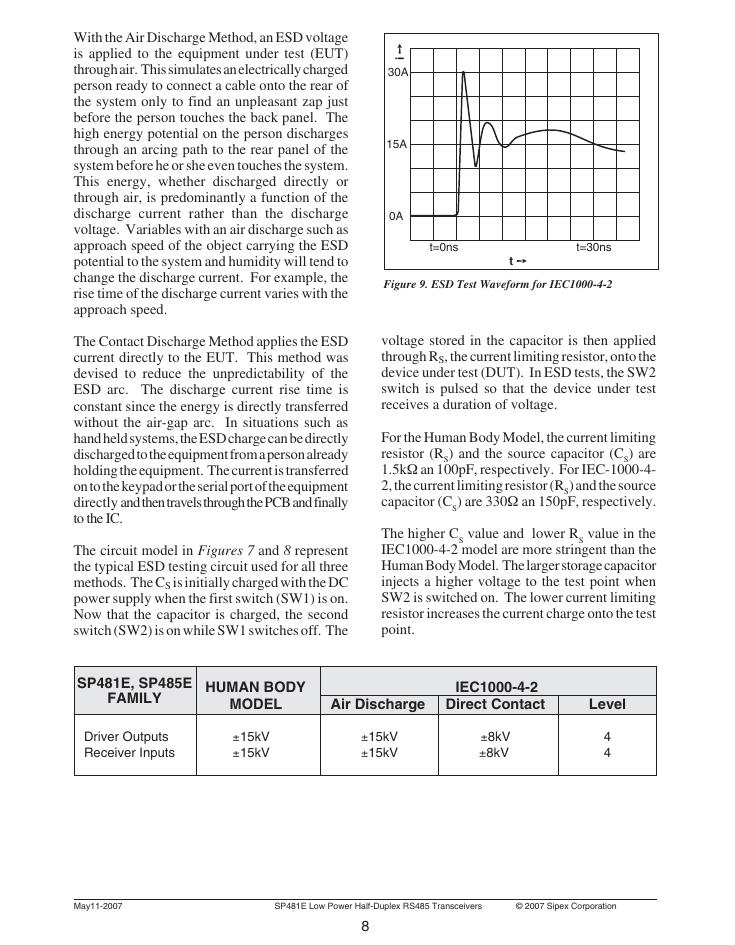








 V2版本原理图(Capacitive-Fingerprint-Reader-Schematic_V2).pdf
V2版本原理图(Capacitive-Fingerprint-Reader-Schematic_V2).pdf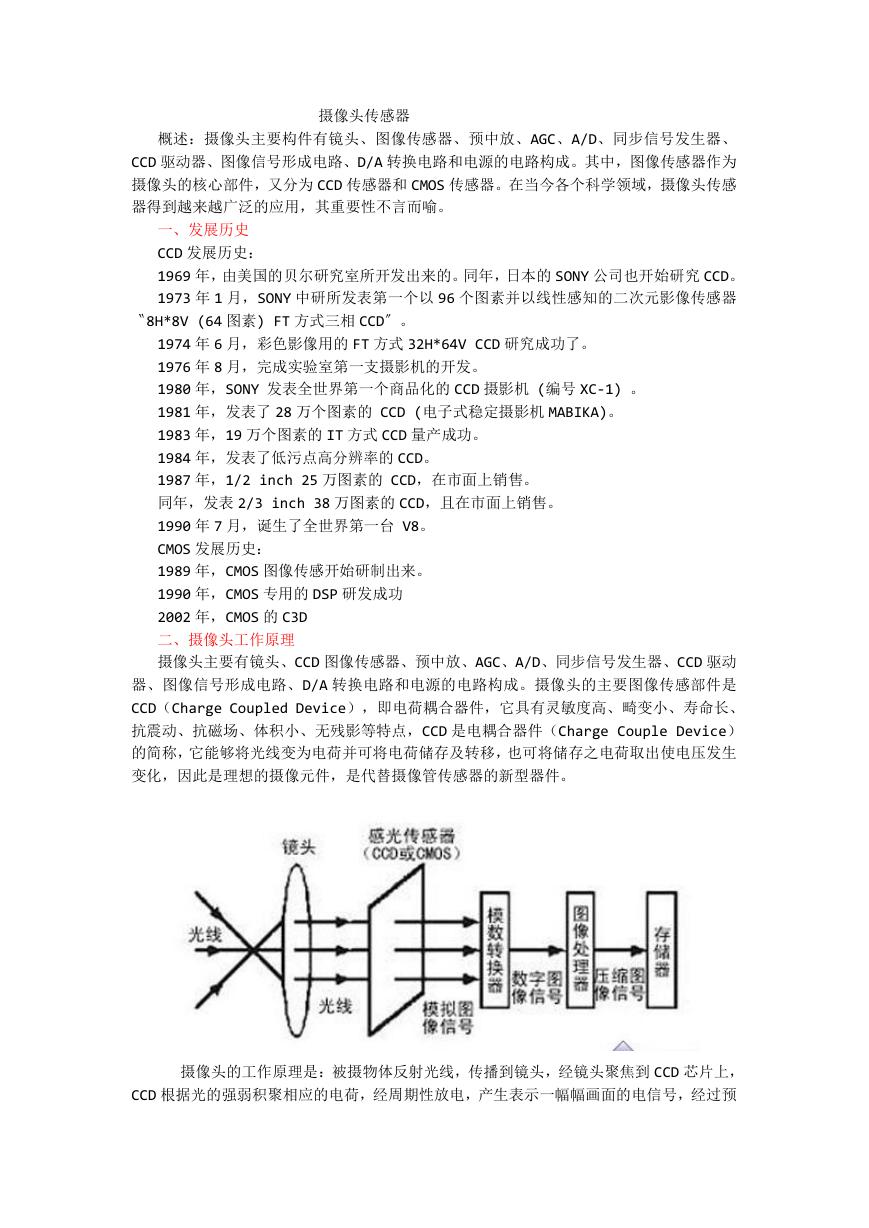 摄像头工作原理.doc
摄像头工作原理.doc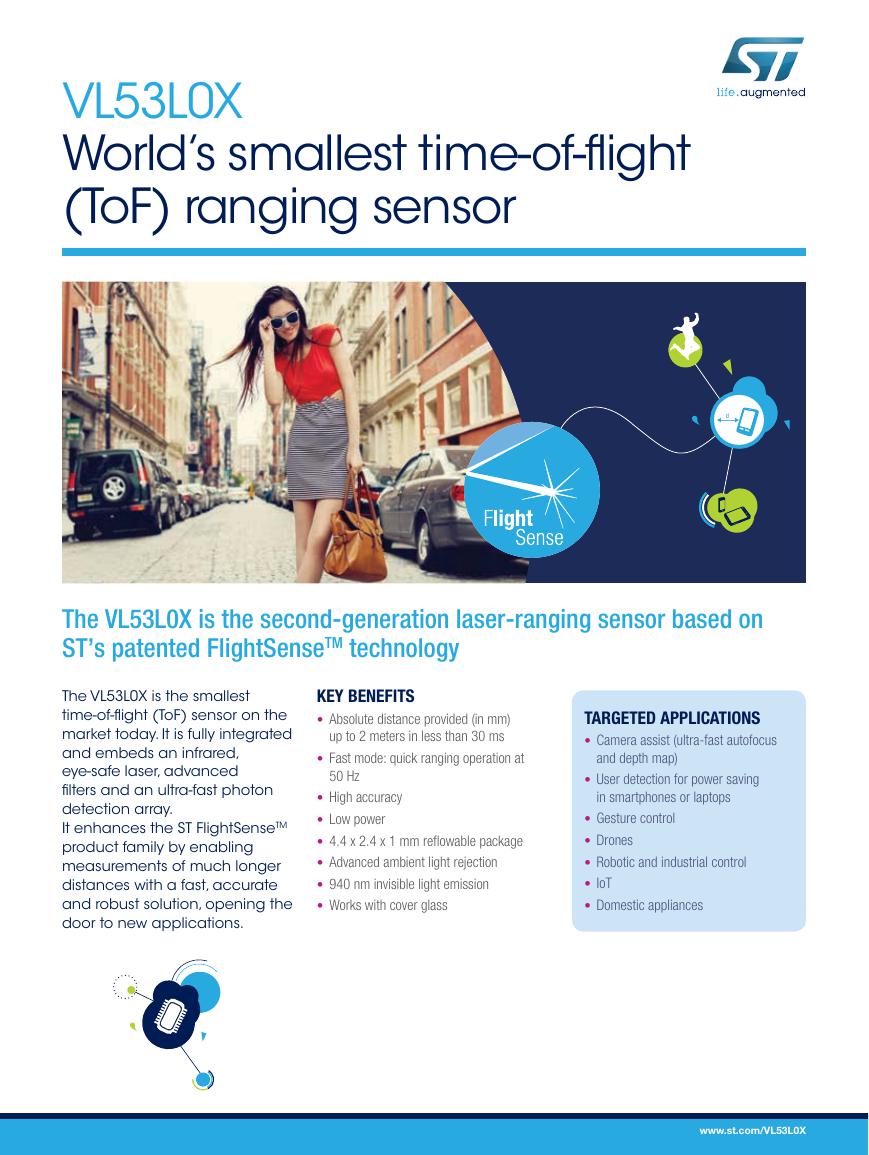 VL53L0X简要说明(En.FLVL53L00216).pdf
VL53L0X简要说明(En.FLVL53L00216).pdf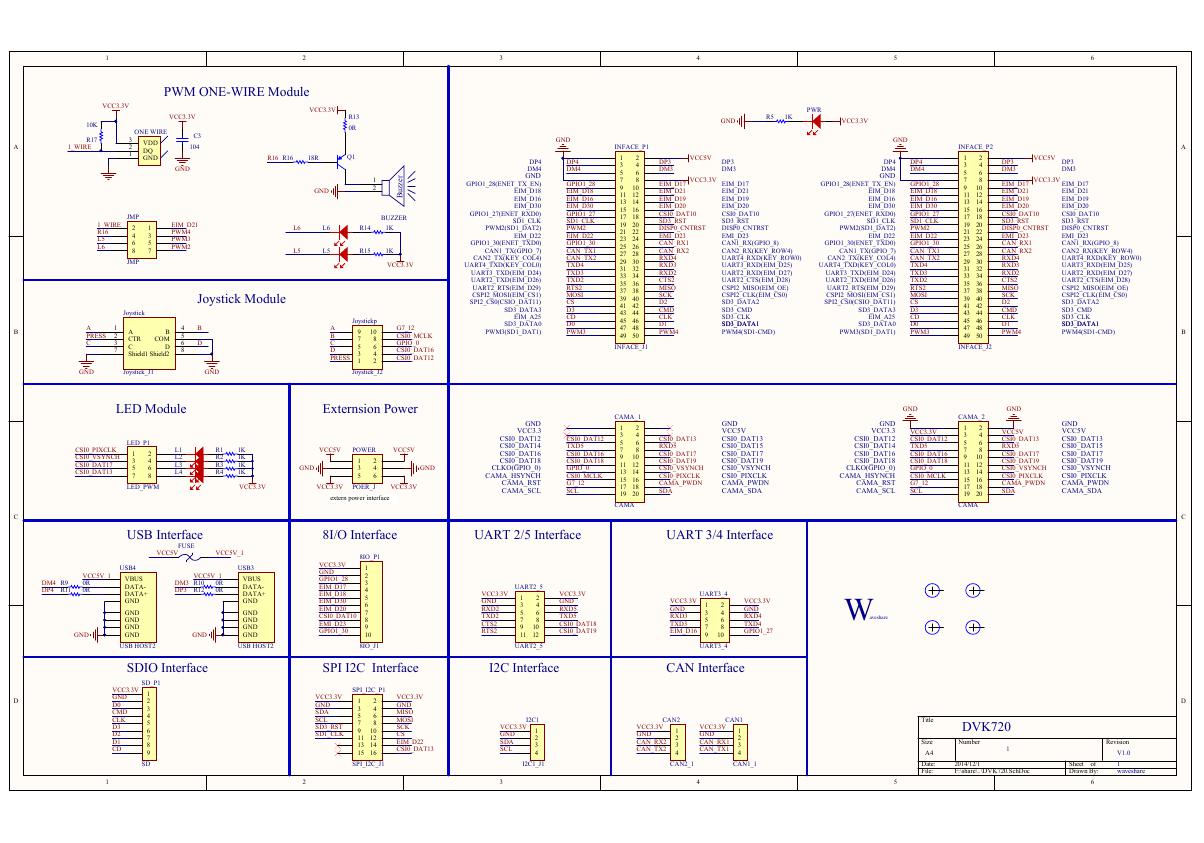 原理图(DVK720-Schematic).pdf
原理图(DVK720-Schematic).pdf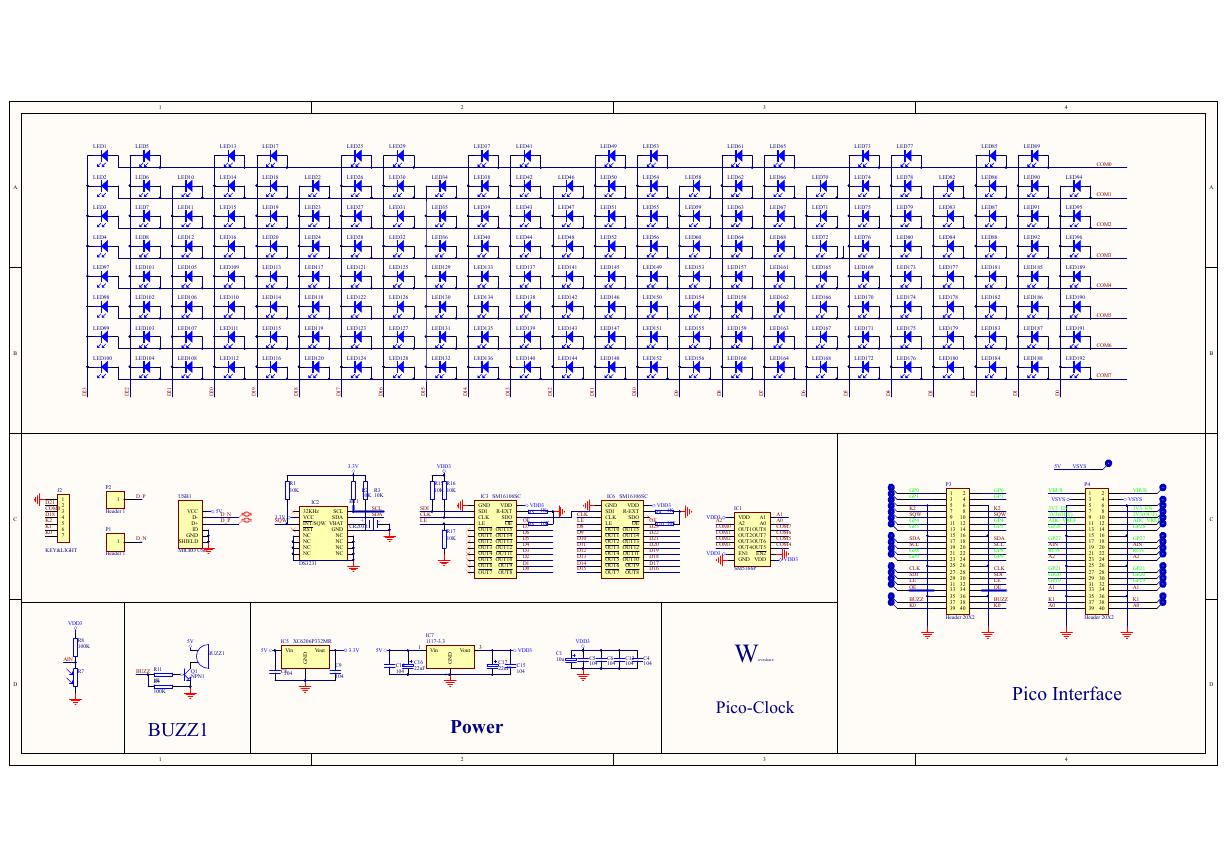 原理图(Pico-Clock-Green-Schdoc).pdf
原理图(Pico-Clock-Green-Schdoc).pdf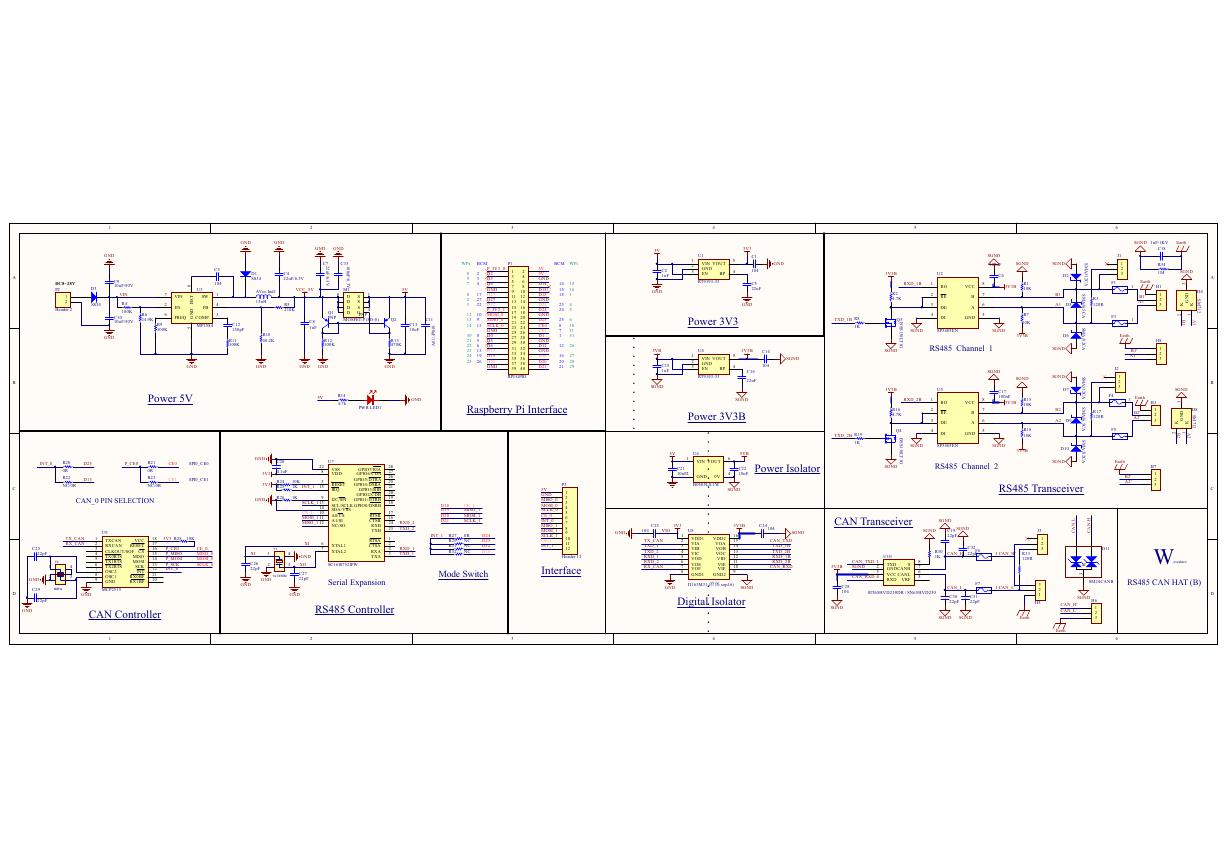 原理图(RS485-CAN-HAT-B-schematic).pdf
原理图(RS485-CAN-HAT-B-schematic).pdf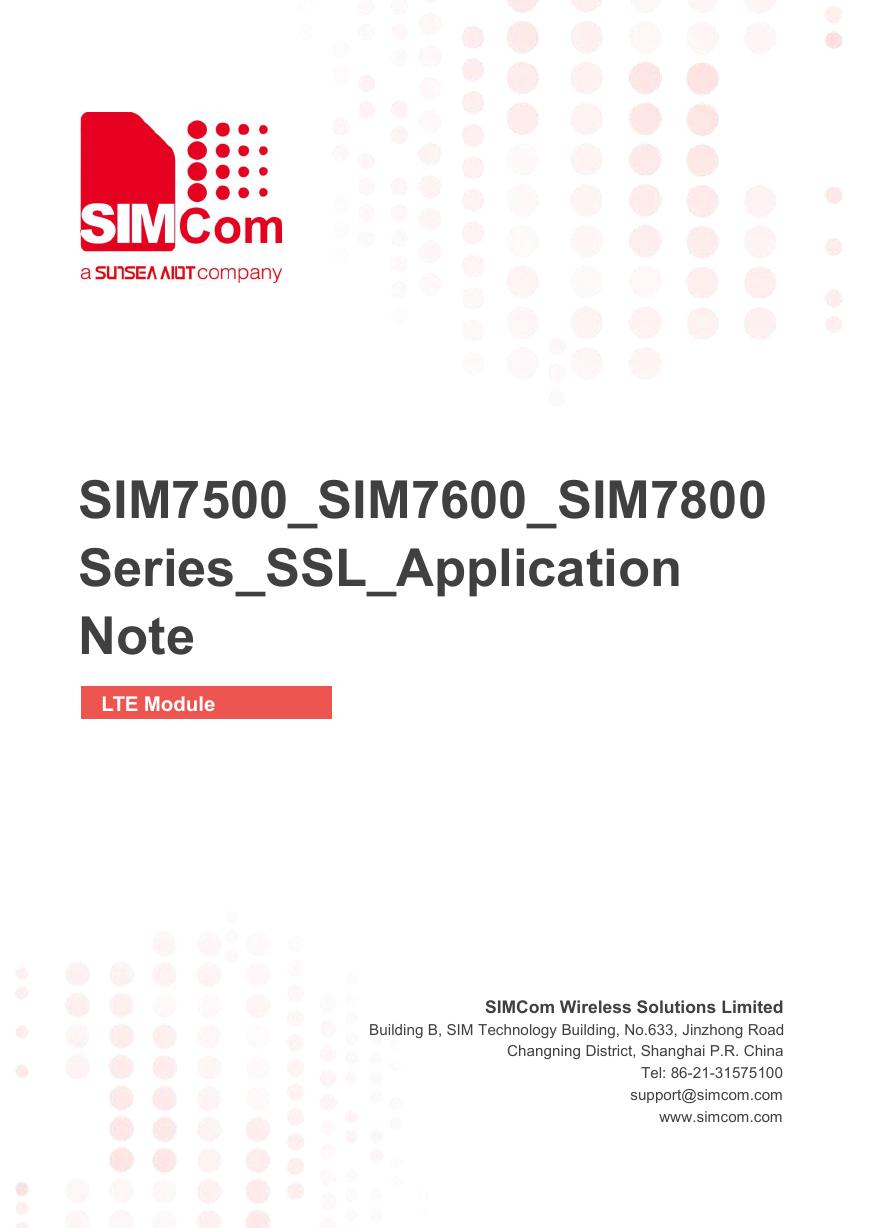 File:SIM7500_SIM7600_SIM7800 Series_SSL_Application Note_V2.00.pdf
File:SIM7500_SIM7600_SIM7800 Series_SSL_Application Note_V2.00.pdf ADS1263(Ads1262).pdf
ADS1263(Ads1262).pdf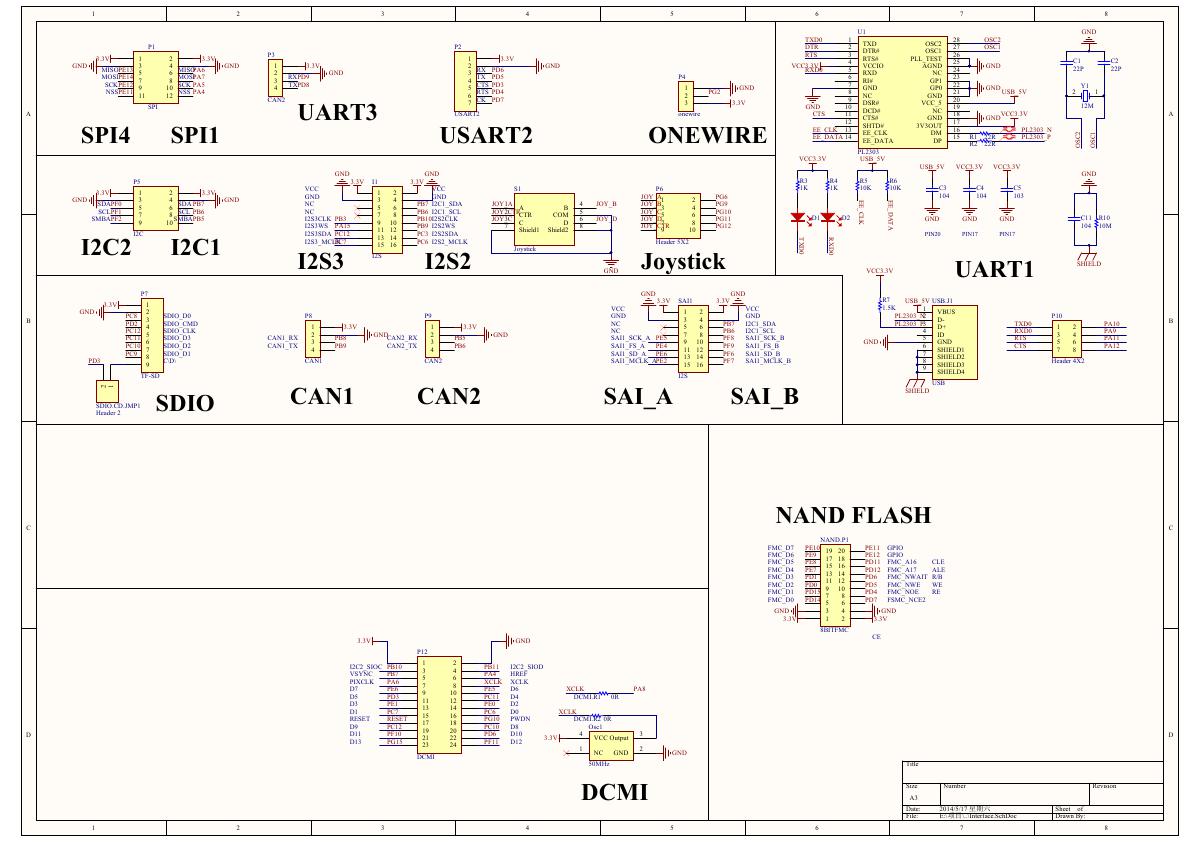 原理图(Open429Z-D-Schematic).pdf
原理图(Open429Z-D-Schematic).pdf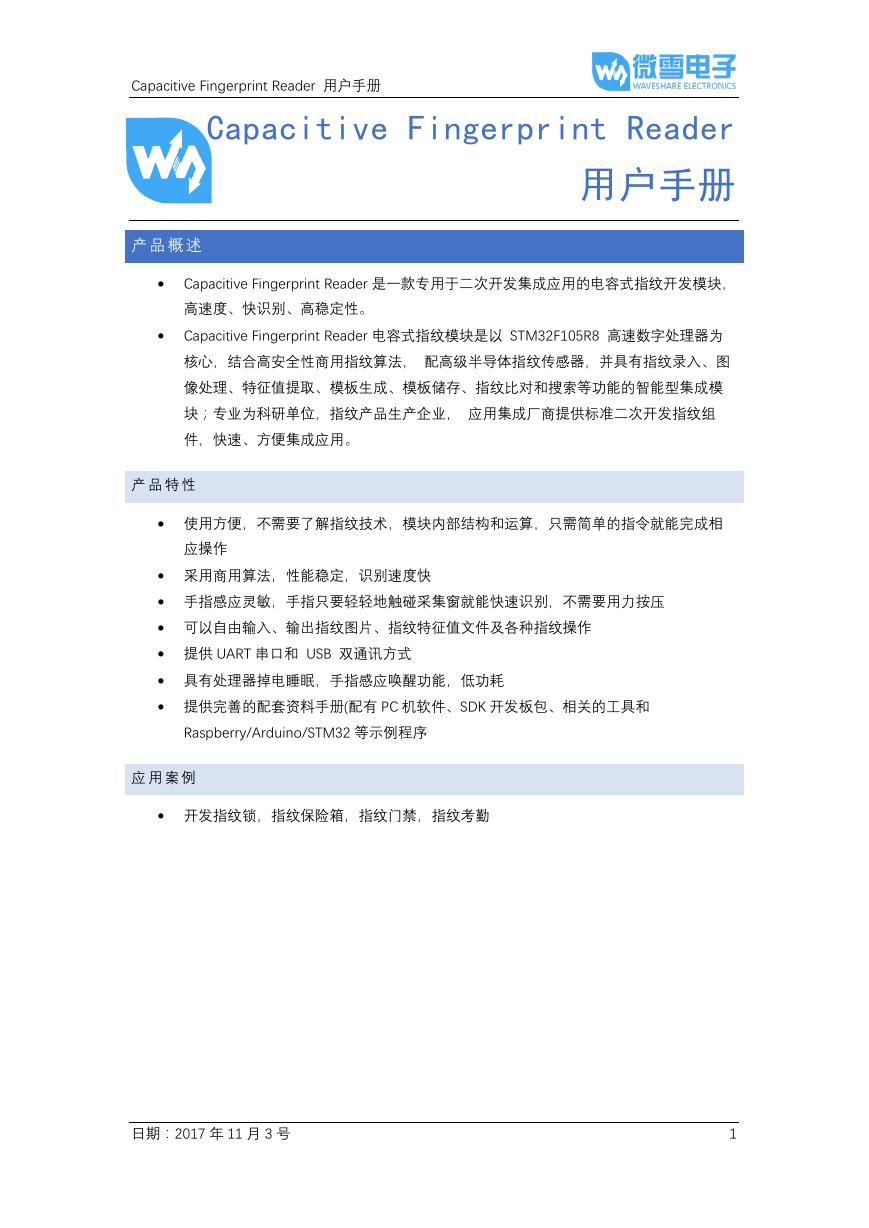 用户手册(Capacitive_Fingerprint_Reader_User_Manual_CN).pdf
用户手册(Capacitive_Fingerprint_Reader_User_Manual_CN).pdf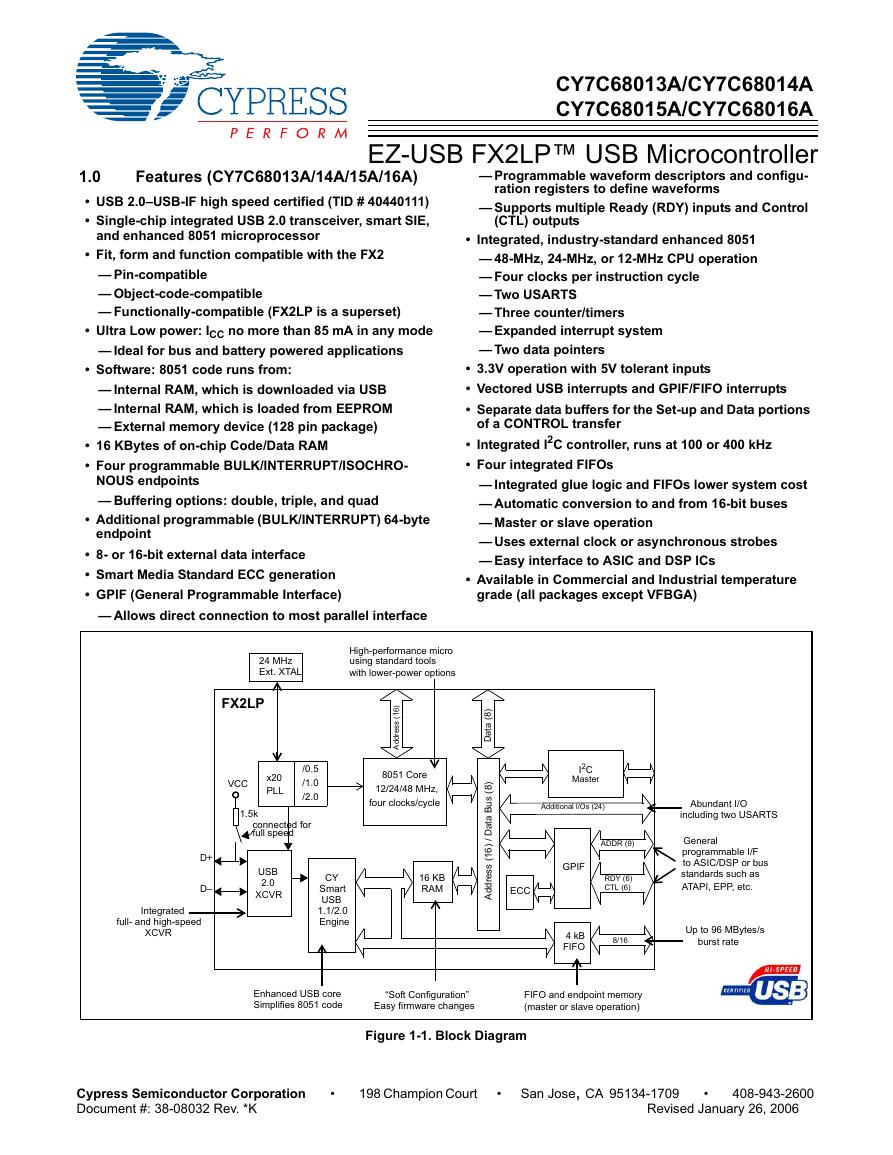 CY7C68013A(英文版)(CY7C68013A).pdf
CY7C68013A(英文版)(CY7C68013A).pdf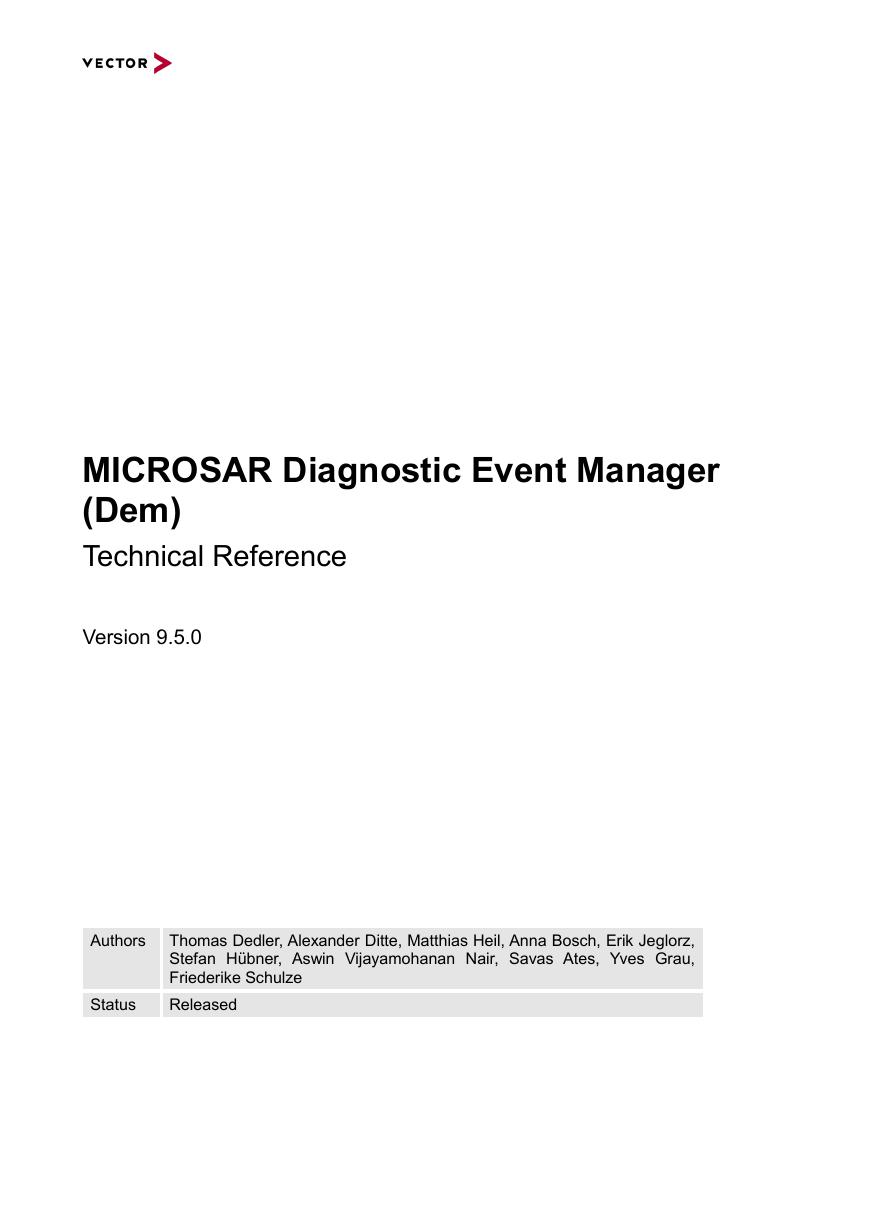 TechnicalReference_Dem.pdf
TechnicalReference_Dem.pdf